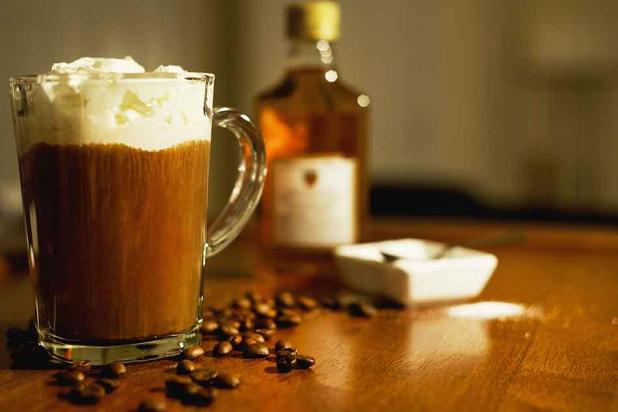
Many St. Patrick’s Day traditions not from Ireland
St. Patrick’s Day, March 17, is made special by various traditions. Everything from dyeing major cities’ rivers green to parades to enjoying green foods has become part of the pageantry of St. Patrick’s Day.
The next time you raise a green beer to your lips, you may wonder which traditions are authentically Irish and which ones were created by regions with an abundance of Irish emigrants. Surprisingly, many seemingly Irish traditions likely began elsewhere.
First parade
It would be accurate to assume that various elements associated with St. Patrick’s Day began where St. Patrick, the patron saint of Ireland, once resided, including the first St. Patrick’s Day parade. However, some of the first parades held in St. Patrick’s honor took place in two North American cities, New York and Boston, that had high numbers of Irish immigrants.
But historians say the first ever St. Patrick’s Day parade was actually held in St. Augustine, Florida in 1601, a year after gunfire blasts were used to honor the saint. The parade may have been at the request of an Irish priest living there at the time.
Corned beef and cabbage
What would St. Patrick’s Day be without an authentic meal of corned beef and cabbage? This dish is not so authentic after all, and actually is an American innovation. Ham and cabbage was widely eaten in Ireland, but corned beef was a cheaper alternative found in America by immigrants. Therefore, corned beef became a staple of poor Irish immigrants living in lower Manhattan. The salted meat was boiled three times to remove some of the brine and make it palatable.
Green beer
Green beer is not an Irish custom, but an American one. The most common beer consumed in Ireland is Guinness, which is dark brown to black in color, making green dye useless in Irish pubs since it would be largely invisible in the stout.
Golf tournaments
One would not associate golf with St. Patrick’s Day unless they reside in Nome, Alaska. Golf is a popular Irish pastime, and each year the Bering Sea Ice Classic Golf Tournament takes place right around St. Patrick’s Day. Bright green golf balls are used, and breaks are factored in between holes to warm up at local bars.
Wearing green
According to The Christian Science Monitor, individuals in the United States started wearing green to celebrate St. Patrick’s Day in the early 1700s. They believed it “made one invisible to leprechauns.” The official color for the holiday used to be a sky blue known as “St. Patrick’s Day Blue,” established during the reign of King George III.
In addition to these traditions, specialty items, such as shakes, also are very popular. However, most of these do not have origins on the Emerald Isle, either. Yet, no matter where traditions began, there’s no denying St. Patrick’s Day has long inspired celebration.
Irish coffee
Though it might not be as beloved as a pint of Guinness or as inviting as a shot of Jameson’s Irish whiskey after some cold hours spent marching in or viewing a parade, Irish coffee has a place all its own on St. Patrick’s Day.
The origins of Irish coffee are sometimes debated, though many historians trace the beverage to a stormy night in Ireland. One fateful night in 1943, Irishman Joe Sheridan was called back to work at the restaurant and coffee shop at the Foynes Airbase Flying Boat terminal in County Limerick.
A flight that had recently departed for Newfoundland was forced to return to the airport that night due to inclement weather. According to the Foynes Flying Boat and Maritime Museum, Sheridan was asked to make something for the passengers to help them stay warm. Before serving some freshly made coffee, Sheridan decided to add a little Irish whiskey, and the rest is history.
The popularity of Irish coffee is undeniable, and some of that popularity likely stems from how easy it can be to make the drink at home. Though Irish coffee is a straightforward beverage, the Foynes Flying Boat and Maritime Museum offers the following tips for those who want to whip up a batch that would make Sheridan proud.
1. Preheat an Irish coffee glass by filling it with boiling water. Keep the water in the glass for 5 seconds, and then pour the water out.
2. Add 1 teaspoon of brown sugar and a good measure of Irish whiskey into the warmed glass.
3. Fill the glass to within 1 centimeter (a little less than half an inch) of the brim of the glass with hot and strong black coffee. Stir well so all of the brown sugar dissolves.
4. Carefully pour lightly whipped cream over the back of a spoon. The goal is to ensure the cream floats on top of the coffee.
5. Do not stir after adding the cream. It’s important to avoid stirring because the Irish coffee will be most flavorful if you drink the coffee and whiskey through the cream.
A pint of Guinness might be a must for millions of St. Patrick’s Day celebrants across the globe. But those who want something a little warmer can try their hands at Irish coffee as they toast the patron saint of Ireland on Wednesday.
